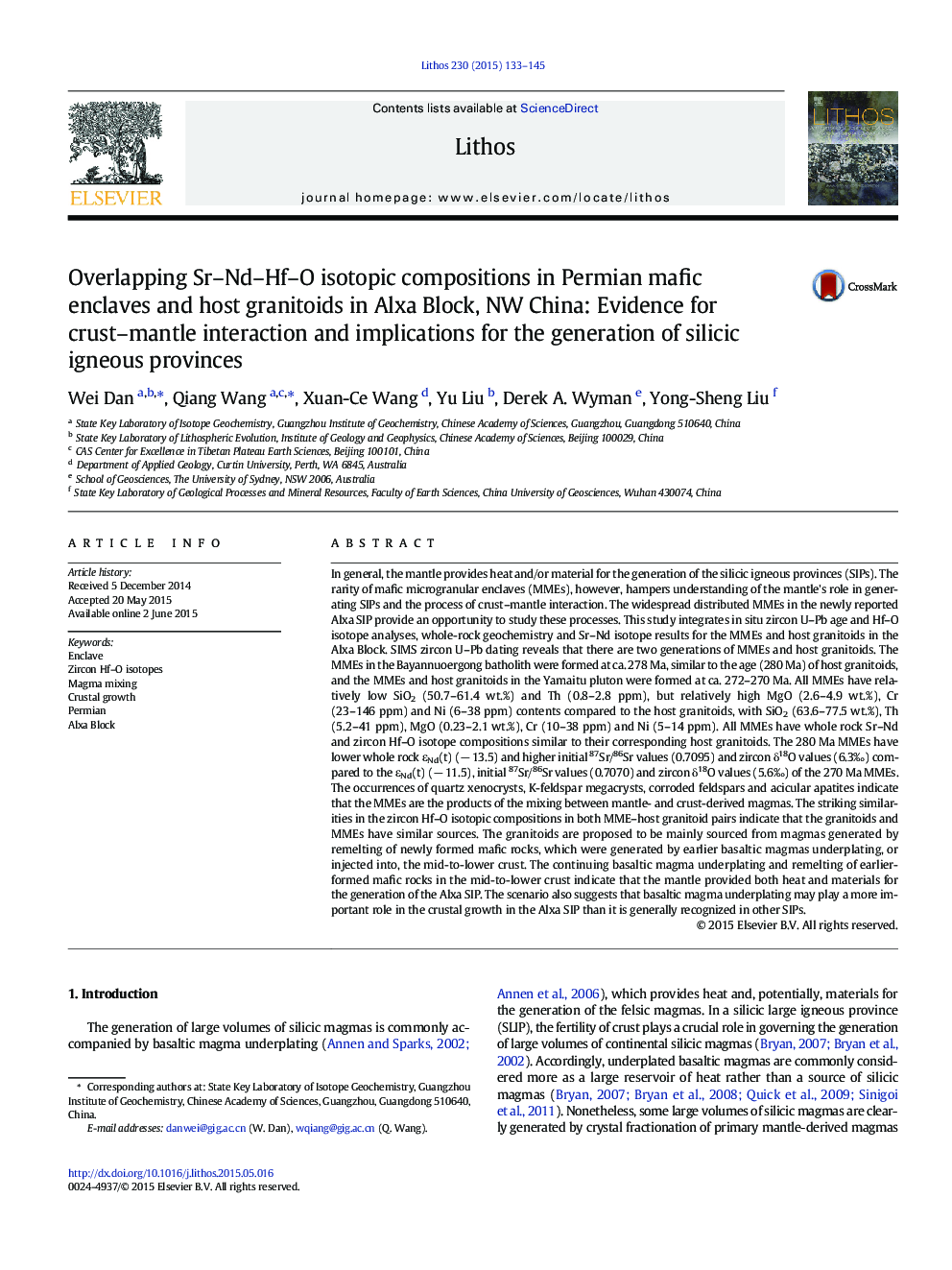| کد مقاله | کد نشریه | سال انتشار | مقاله انگلیسی | نسخه تمام متن |
|---|---|---|---|---|
| 4715676 | 1638661 | 2015 | 13 صفحه PDF | دانلود رایگان |

• Two stages of 280 Ma and 270 Ma MMEs in the Alxa silicic igneous province
• Similar whole rock Sr–Nd and zircon Hf–O isotopes in each MME–granitoid pair
• Remelting of the newly formed mafic rocks to produce granitoids
• Significant crustal growth in the Alxa SIP
In general, the mantle provides heat and/or material for the generation of the silicic igneous provinces (SIPs). The rarity of mafic microgranular enclaves (MMEs), however, hampers understanding of the mantle's role in generating SIPs and the process of crust–mantle interaction. The widespread distributed MMEs in the newly reported Alxa SIP provide an opportunity to study these processes. This study integrates in situ zircon U–Pb age and Hf–O isotope analyses, whole-rock geochemistry and Sr–Nd isotope results for the MMEs and host granitoids in the Alxa Block. SIMS zircon U–Pb dating reveals that there are two generations of MMEs and host granitoids. The MMEs in the Bayannuoergong batholith were formed at ca. 278 Ma, similar to the age (280 Ma) of host granitoids, and the MMEs and host granitoids in the Yamaitu pluton were formed at ca. 272–270 Ma. All MMEs have relatively low SiO2 (50.7–61.4 wt.%) and Th (0.8–2.8 ppm), but relatively high MgO (2.6–4.9 wt.%), Cr (23–146 ppm) and Ni (6–38 ppm) contents compared to the host granitoids, with SiO2 (63.6–77.5 wt.%), Th (5.2–41 ppm), MgO (0.23–2.1 wt.%), Cr (10–38 ppm) and Ni (5–14 ppm). All MMEs have whole rock Sr–Nd and zircon Hf–O isotope compositions similar to their corresponding host granitoids. The 280 Ma MMEs have lower whole rock εNd(t) (− 13.5) and higher initial 87Sr/86Sr values (0.7095) and zircon δ18O values (6.3‰) compared to the εNd(t) (− 11.5), initial 87Sr/86Sr values (0.7070) and zircon δ18O values (5.6‰) of the 270 Ma MMEs. The occurrences of quartz xenocrysts, K-feldspar megacrysts, corroded feldspars and acicular apatites indicate that the MMEs are the products of the mixing between mantle- and crust-derived magmas. The striking similarities in the zircon Hf–O isotopic compositions in both MME–host granitoid pairs indicate that the granitoids and MMEs have similar sources. The granitoids are proposed to be mainly sourced from magmas generated by remelting of newly formed mafic rocks, which were generated by earlier basaltic magmas underplating, or injected into, the mid-to-lower crust. The continuing basaltic magma underplating and remelting of earlier-formed mafic rocks in the mid-to-lower crust indicate that the mantle provided both heat and materials for the generation of the Alxa SIP. The scenario also suggests that basaltic magma underplating may play a more important role in the crustal growth in the Alxa SIP than it is generally recognized in other SIPs.
Journal: Lithos - Volume 230, 1 August 2015, Pages 133–145